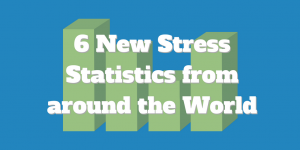Progressive muscle relaxation techniques might sound complicated but it’s just “what it says on the bin”: muscle relaxation techniques done in a progressive manner.
Think about it. It is quite difficult to relax when your friends are telling you to “just relax”. It is equally difficult to tell your muscles to “just relax” so you can get rid of stress.
But, what can you do? It seems counter-intuitive initially, but it works towards achieving exactly that: progressive muscle relaxation. So, what do you do?
You contract your muscles, of course!
This is one of the easiest relaxation exercises and the benefits are almost immediate. Just try it. Try to frown and tense your forehead for 10 seconds. Release. How do you feel?
It is not easy to relax the muscles, and it requires some practice, but once your body knows how to tense and then relax muscles, you can relieve tension and stress on the spot.
Concentrating your attention on something else than the stress factor, and progressively relaxing your muscles works both on your body and on your mind to reduce the damaging effects stress has on you.
Progressive muscle relaxation is based on a fact that if you are completely relaxed it is impossible to be tense and anxious.
Progressive Muscle Relaxation Techniques
There are 4 stages in the progressive muscle relaxation:
- Awareness of tension – by concentrating on an area of your body, you learn to recognize tension.
- Tensing the muscles
- Letting go of the tension
- Awareness of relaxation – you concentrate on the particular area of your body, and you learn to recognize the feeling of relaxation.
When you practice, tense the muscles for 10-15 seconds and then relax for other 10-15 seconds before tensing the muscles again.
You can use this technique any time during the day. You can also use it while lying down in bed, just before falling asleep. You will get a deep, recharging sleep.
Tense and Relax
If you have time, you can go through all the 16 muscle groups and do the “tense and relax” exercise.
- dominant hand and forearm
- dominant upper arm
- non-dominant hand and forearm
- non-dominant upper arm
- forehead
- upper cheeks and nose
- lower face
- neck
- chest, shoulders, and upper back
- abdomen
- dominant upper leg
- dominant calf
- dominant foot
- non-dominant upper leg
- non-dominant calf
- non-dominant foot
If you are short on time, you can combine several muscle groups into bigger groups, and do the “tense and release” as follows:
- arms and hands
- face and neck
- chest, shoulders, back, abdomen
- legs and feet
Most of the times we are unaware of the physical tension in our bodies.
Progressive Muscle Relaxation – The Benefits
Progressive muscle relaxation helps you identify the pain spots by making you aware of the difference between tension and relaxation in your body.
As with the other methods, the more you practice, the easier it will be to experience more profound and faster relaxation.
It’s one of the easiest and most effective relaxation techniques for anxiety and stress.







